Knowing Your Exact Curl Type Can Be Tricky, so Two Texture Specialists Broke It Down for Us

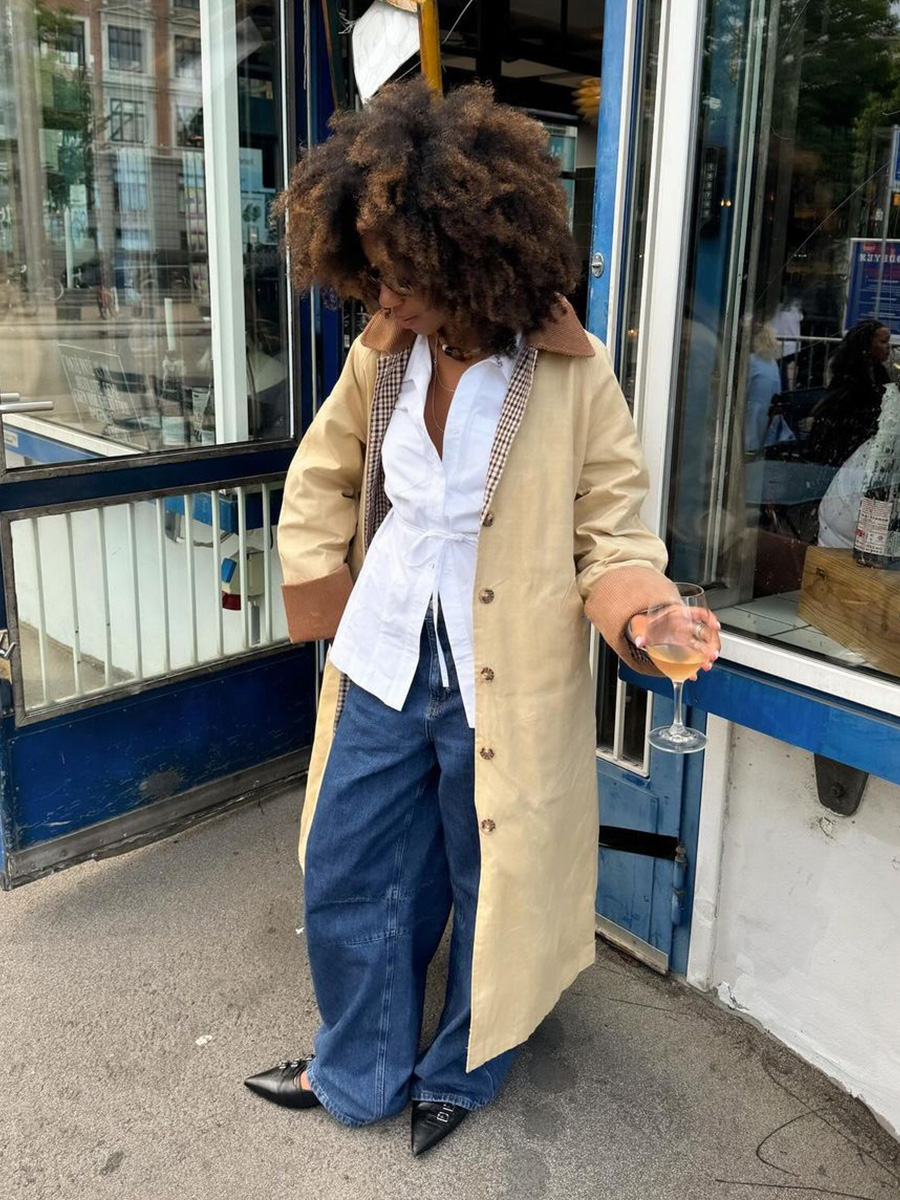
Four years ago, I made one of the biggest changes of my life. In October 2020, I underwent the "big chop," trimming my chemically altered hair to the root for my natural texture to make a triumphant return. Going back to natural coils also prompted a deep edit of the hair products I used daily and required relearning how to care for them. In truth, I wouldn't have known where to begin my natural hair journey if not for the guidance of trusted hairstylists who taught me about celebrity hairstylist and educator Andre Walker's popular curl-typing system.
To get a better idea of what the different curl types are and what each needs to thrive, I tapped Maria Sotiriou, curl specialist and founder of Silke London, and celebrity hairstylist Sophie Rose Gutterman to share the perfect curly hair routine for your needs and their favourite products designed to enhance curls of all types. Whether you're looking to completely revamp your haircare routine or have yet to be introduced to your hair type, they've got you covered. Keep scrolling to learn all about the different hair types and what you can do to make yours thrive.
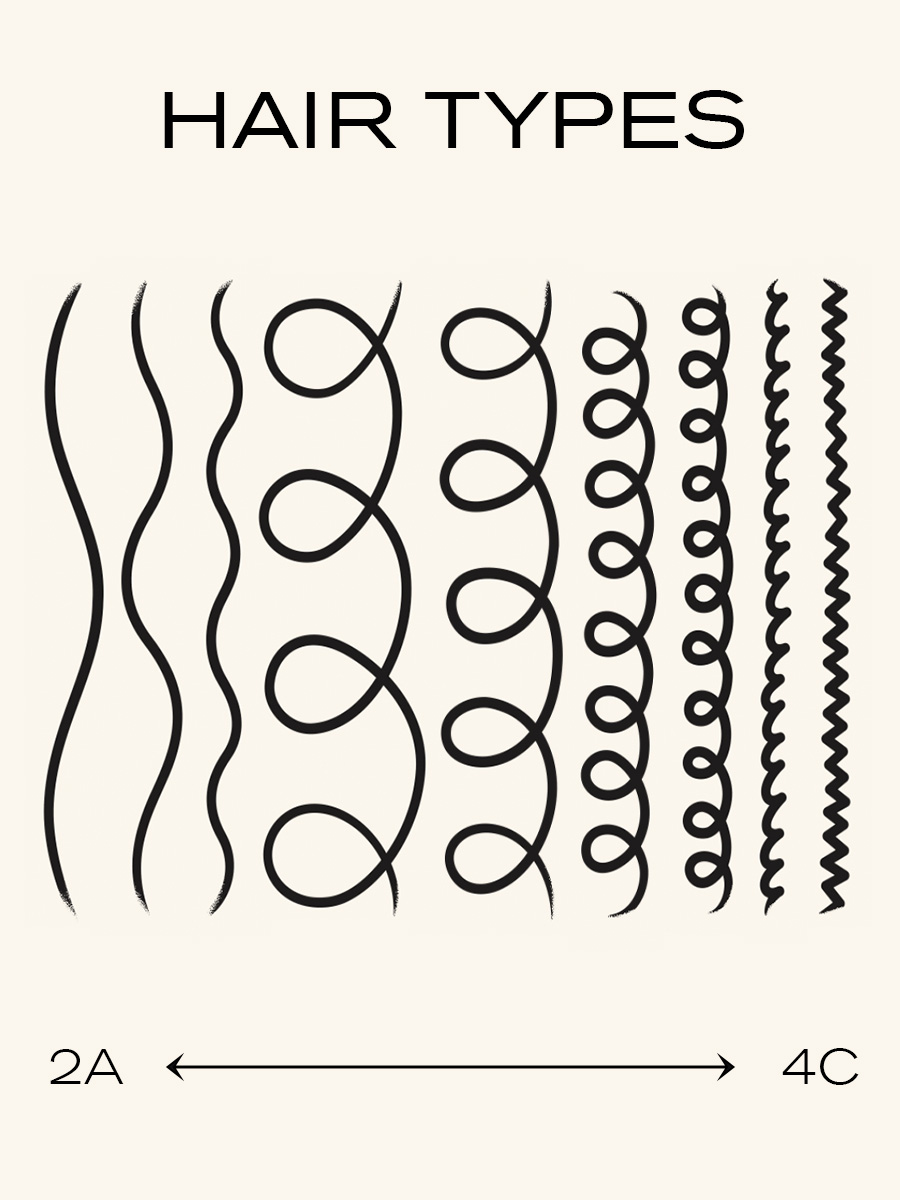
"Curly hair" is an umbrella term used to describe hair with tighter textures and the pattern of individual hair strands. The texture of each is categorized as being fine, medium, or coarse. "Each category is determined by the circumference of individual strands," Sotiriou explains. A hair type is assigned to determine how we expect the hair to act. "1a, 1b, and 1c hair is straight hair and will probably be difficult to style and hold a curl, whereas 4c type hair will be coily, but the texture can be fine and delicate even though you might not think it is," she says.
If you're unsure of where your strands fall on the spectrum, you're in luck. Sotiriou tells me there's a quick trick to revealing the nature of your hair. "The easiest way to determine curl pattern is by looking to see if the curl rotates round and back to sit just below the curl above. That would probably be coily hair," Sotiriou says. "If the hair curls around but drops lower when moving into the next curl, that is probably curly hair. Finally, if the hair doesn't curl back around but drops into a bend, that is wavy hair."
Is it possible for there to be different curl types on a single head of hair? According to Gutterman, not only can someone have multiple curl types in different locations, but they can also change over time. "It can be [more] curly, and the texture over time can get straight or be different from heat damage, chemicals, or even taking hormonal supplements," she explains. It's also helpful to know if your curls are high or low porosity, since water and products can enter the hair but also leave it easily. "Hair porosity will play a big role in how much product you need. Depending on how well your hair retains water, you may have to use a more hydrating leave-in," says Gutterman.
Now that you know what to pay attention to, keep scrolling for an introduction to the different curl types.
Type 2 (Wavy Hair)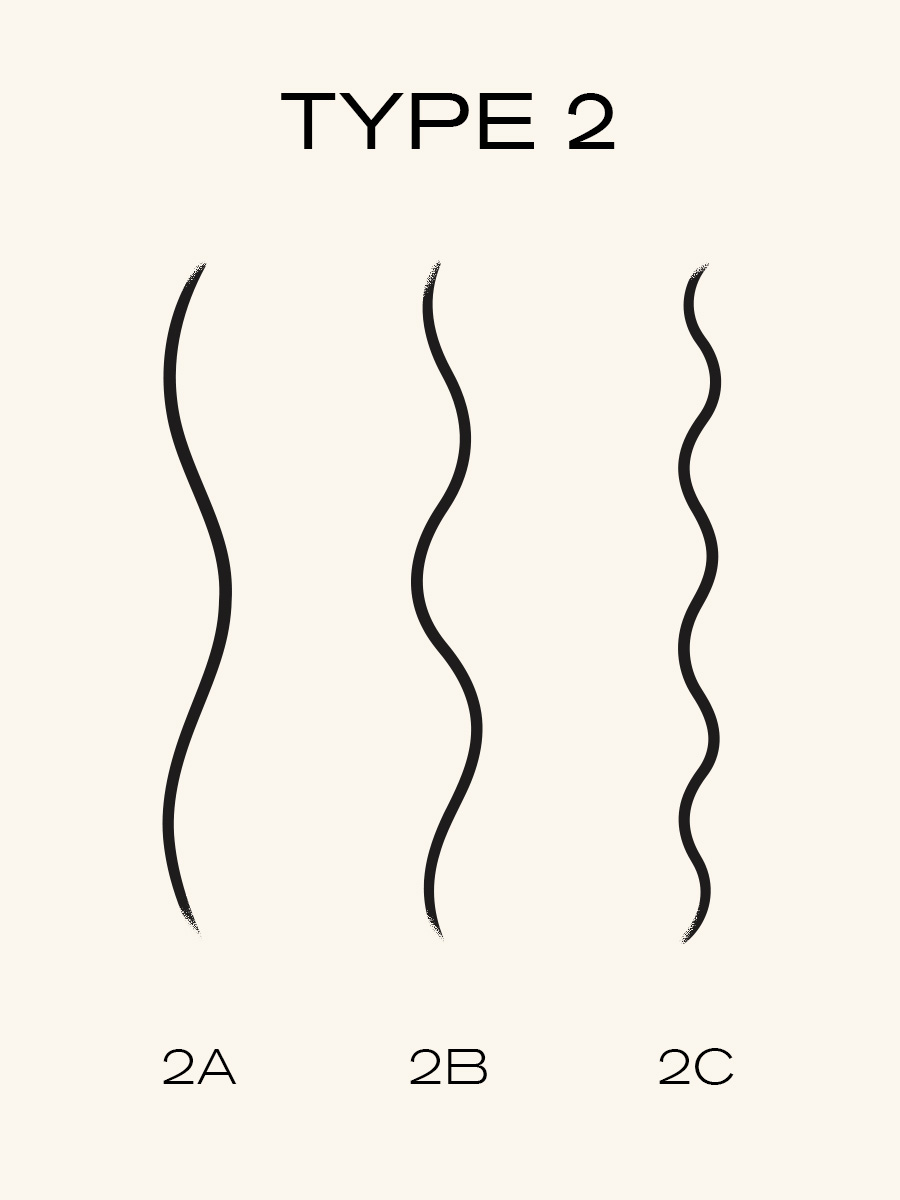
Type 2 curls range from fine to coarse textures, are bendable, hold their shape, and grow in an S-shaped pattern from the scalp. To extend the longevity of styles with type 2 curls and reduce the chance of flattening, try diffusing your curls for maximum volume and definition. Then, finish off with a lightweight holding spray.
2a: This curl type features a fine texture that can be easily straightened. It also tends to lack volume at the root. To give the hair more volume and fullness, consider using light hair mousse to add some fullness at the base and pump up the volume without weighing down your strands.
2b: Lying flat at the crown with defined S-shaped waves starting from mid-length, the strands of this hair type have a thicker diameter than 2a. To play up your natural waves, try using a sea salt texturizing mist.
2c: Because the 2c curl type features S-shaped bends that are defined at the root and thick, they're susceptible to frizzing. To keep your curls well-maintained and defined, use a non-lathering, sulfate-free co-wash between washdays that won't strip natural oils and moisture away. Layering styling cream with mousse will lock in moisture and add hydration.
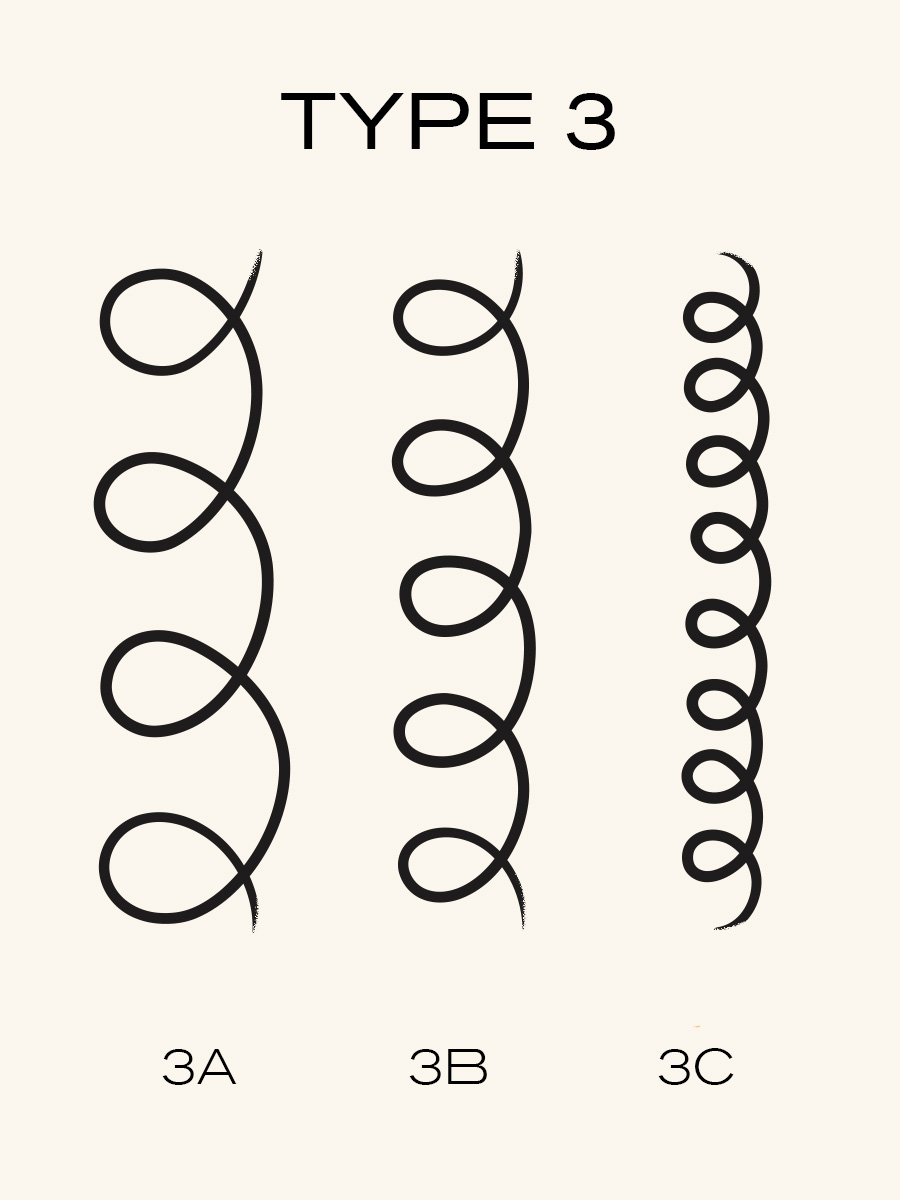
Type 3 curls range from shiny, loose S-pattern curls to tight corkscrew-shaped curls that form ringlets. The secret to maintaining the health of these strands is to use products that moisturize and define while combating halo frizz. You may also see some success layering products for extended wear time.
3a: This hair type tends to be shiny and have large, loose curls. It's also one of the most fragile curl types, as any friction can create frizz. Try scrunching a curl-enhancing product into damp hair to emphasise its texture and spritz with a lightweight curl refresher.
3b: Strands with a 3b curl type come in the form of springy, tight ringlets. This texture can get dry, so make sure you use curl gel formulated with humectants like hyaluronic acid, glycerin and aloe vera to attract moisture, offer definition, and deter frizz.
3c: This curl type is defined by densely packed, high-volume curls that are impacted by humidity, resulting in frizz. To stop your curls from drying out, use sulfate-free, creamy cleansers followed by mousse and styling cream while your hair is still wet.
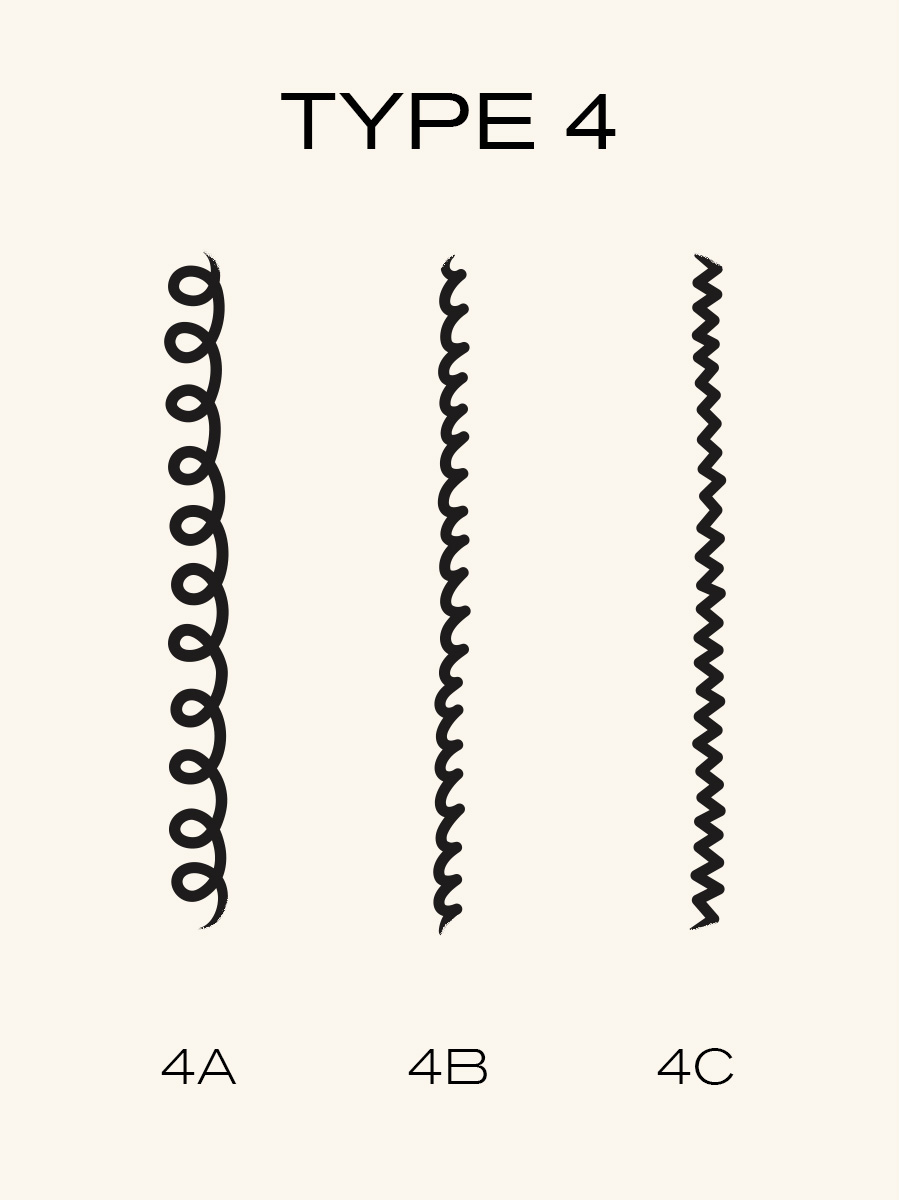
Type 4 hair—also referred to as kinky or Afro textured—features tight, small curls that are naturally dry and can range from fine to coarse. They form tight, Z-shaped strands at the scalp and often experience shrinkage without help from products formulated to lengthen and define the hair. No matter how these curls are styled, moisture is their best friend!
4a: If someone has 4a curls, it means the hair has a visible curl pattern with springy, densely packed, S-shaped coils. Try pairing a curl cream with leave-in conditioner and incorporating a scalp massager in your haircare routine to detox the scalp while reducing buildup.
4b: This densely packed curl type has sharp, Z-shaped angles instead of coils that can be shaped and styled in many ways. Because this hair type is prone to dryness, combine priming and moisture sprays with leave-in conditioners with hydrating curl creams between washes.
4c: The 4c pattern has a zigzag shape like 4b curls, but it's less defined and sometimes indiscernible to the eye. This curl type also experiences more shrinkage than any other curl type. Avoid using products containing sulfates that strip the hair of moisture. Instead, opt for natural oils like argan, shea butter, and coconut oil in leave-in conditioners and creams to keep the hair moisturised.
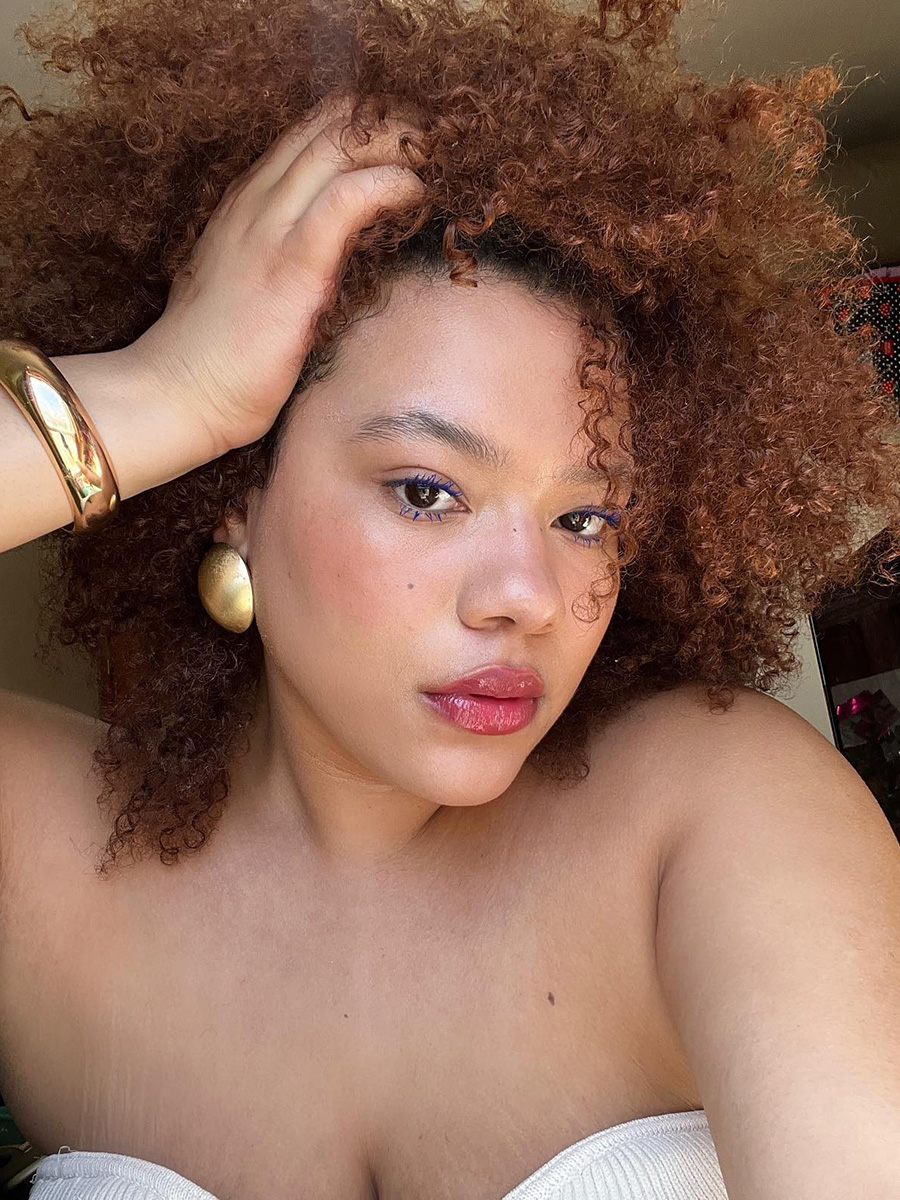
For anyone who's just beginning to learn about their curls, consider scaling back on hairstyling products and heat-styling to focus solely on creating a haircare routine built around the wellness of your hair. This can be done by trimming your strands every 10 to 12 weeks and using pre-wash oiling treatments, hydrating/repairing products, leave-in conditioning creams, heat protection, and sleep protection.
"All your hard work is lost unless you use nighttime hair protection to protect not only your hair but also all the products you've applied to your hair from being lost to the abrasive fabrics of your pillowcase," Sotiriou says.
whowhatwear





